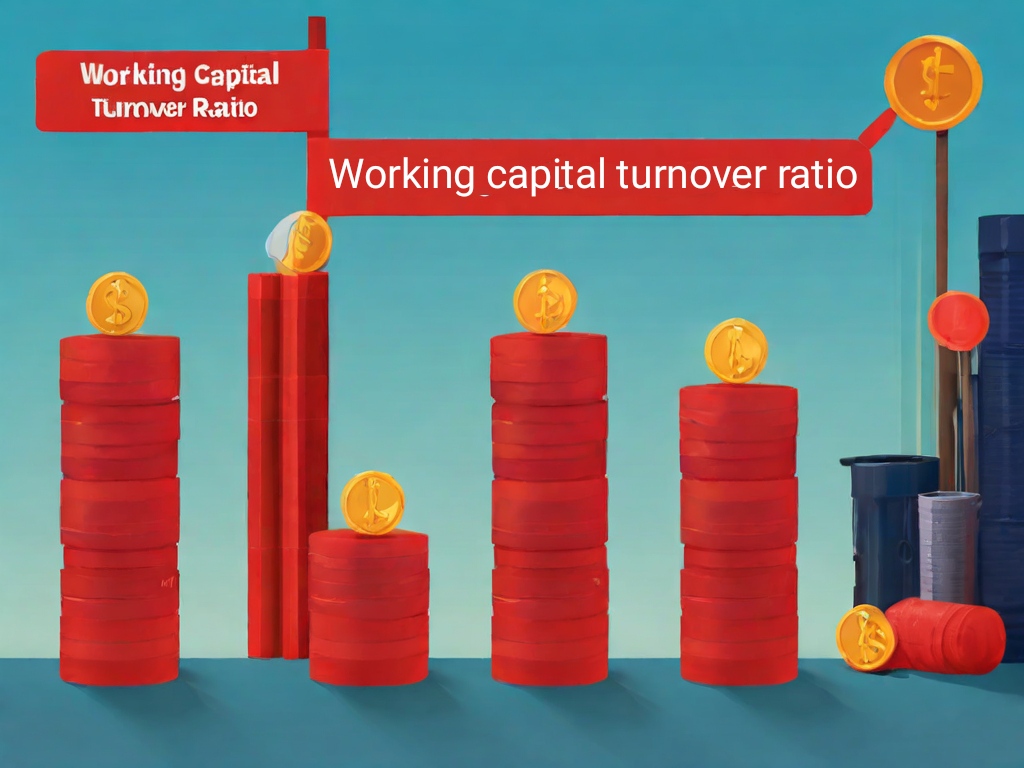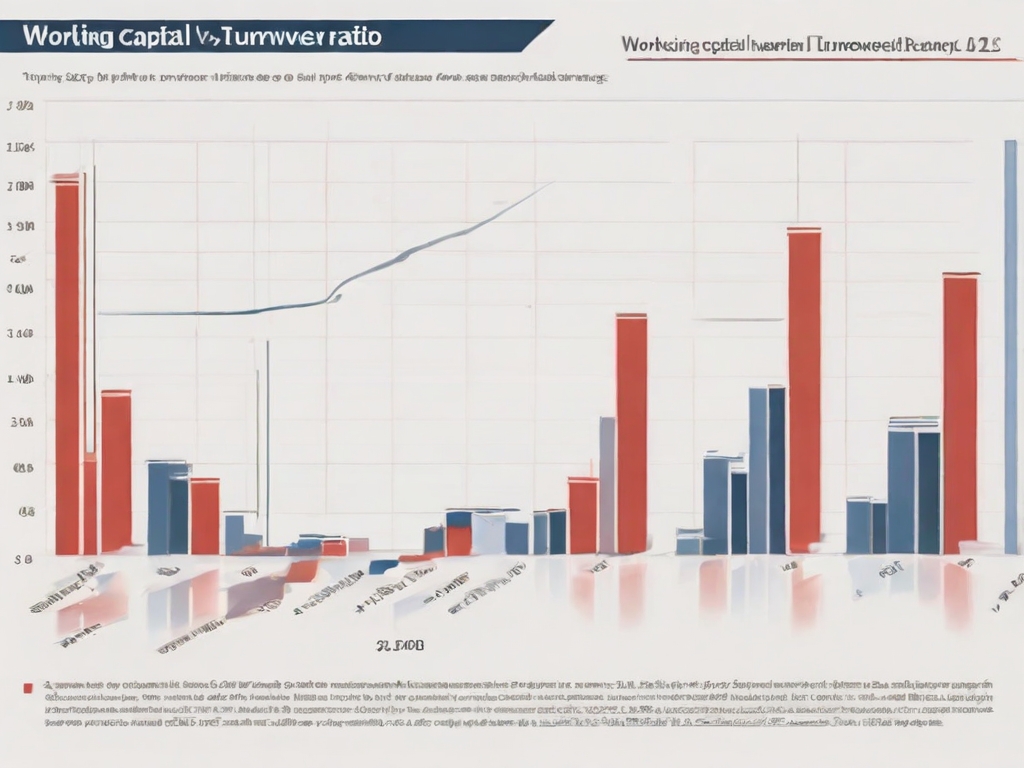
Introduction
In the realm of stock analysis, understanding the intricate details of a company’s financial health is paramount. One such crucial metric is the ”’working capital turnover ratio”’. This ratio provides investors and analysts with insights into how efficiently a company utilizes its working capital to generate sales. In this comprehensive article, we will explore the significance of the working capital turnover ratio, its calculation, interpretation, and its role in making informed investment decisions.

Understanding Working Capital and the Working Capital Turnover Ratio
What is Working Capital?
Before delving into the ”’working capital turnover ratio”’, it is essential to understand what working capital itself entails. Working capital is the difference between a company’s current assets and current liabilities. Current assets include cash, accounts receivable, inventory, and other assets that can be converted into cash within a year. Current liabilities, on the other hand, encompass short-term debt, accounts payable, and other obligations due within a year.
Defining the Working Capital Turnover Ratio:
The ”’working capital turnover ratio”’ is a financial metric that measures how efficiently a company uses its working capital to generate sales. It is calculated by dividing the company’s net sales by its average working capital. The formula is as follows:
Working Capital Turnover Ratio = Net Sales/Average Working Capital

Calculation of the Working Capital Turnover Ratio
To calculate the ”’working capital turnover ratio”’, you need to follow these steps:
1. Determine Net Sales: Net sales are the total revenue from goods sold or services provided, minus returns, allowances, and discounts.
2. Calculate Average Working Capital: Average working capital is found by taking the sum of the working capital at the beginning and the end of a period (typically a year) and dividing by two.
3. Apply the Formula: Divide the net sales by the average working capital to find the working capital turnover ratio.
Example Calculation:
Let’s assume a company, XYZ Corp, has net sales of $500,000 for the year. Its working capital at the beginning of the year was $50,000, and at the end of the year, it was $70,000.
1. Net Sales: $500,000
2. Average Working Capital: ($50,000 + $70,000) / 2 = $60,000
3. Working Capital Turnover Ratio: $500,000 / $60,000 = 8.33
This means XYZ Corp generated $8.33 in sales for every dollar of working capital.

Interpretation of the Working Capital Turnover Ratio
High Ratio vs. Low Ratio:-
High Working Capital Turnover Ratio: A high ratio indicates that the company is efficiently using its working capital to generate sales. This can imply effective management of receivables and inventory, as well as prompt payment of short-term liabilities. However, an excessively high ratio might also suggest that the company has insufficient working capital, which could lead to liquidity problems.
Low Working Capital Turnover Ratio:A low ratio may indicate inefficiency in using working capital. This could be due to high levels of inventory or receivables, which tie up cash that could be used elsewhere. It might also suggest that the company is not generating enough sales relative to its working capital.

Importance of the Working Capital Turnover Ratio in Stock Analysis
Evaluating Operational Efficiency:
The ”’working capital turnover ratio”’ is a crucial metric for evaluating a company’s operational efficiency. By comparing the ratio across different periods, analysts can assess whether the company’s efficiency in using its working capital is improving or declining. This insight helps in identifying trends and potential issues that may affect the company’s profitability and liquidity.
Benchmarking Against Competitors:
Investors often use the working capital turnover ratio to benchmark a company against its competitors. By comparing the ratios, analysts can determine how well a company is managing its working capital relative to industry peers. A company with a significantly higher ratio than its competitors may have a competitive advantage in terms of operational efficiency.
Assessing Liquidity and Financial Health:
While the working capital turnover ratio primarily focuses on efficiency, it also provides insights into a company’s liquidity and overall financial health. Companies with extremely high or low ratios may face liquidity challenges, impacting their ability to meet short-term obligations. A balanced ratio suggests a well-managed working capital structure, contributing to the company’s stability.

Factors Influencing the Working Capital Turnover Ratio
Several factors can influence a company’s working capital turnover ratio, including:
Industry Characteristics:
Different industries have varying working capital requirements. For instance, manufacturing companies typically have higher inventory levels, resulting in lower turnover ratios compared to service-oriented businesses. Therefore, it is crucial to consider industry norms when evaluating the ratio.
Seasonality:
Seasonal fluctuations can impact a company’s working capital turnover ratio. For example, retailers may experience higher sales during the holiday season, leading to temporary increases in the ratio. Analyzing the ratio on a quarterly basis can help account for these seasonal variations.
Business Cycle:
The stage of a company’s business cycle can also affect its working capital turnover ratio. Startups and high-growth companies may have lower ratios due to higher inventory levels and receivables. Mature companies, on the other hand, may exhibit higher ratios as they optimize their working capital management.

Using the Working Capital Turnover Ratio in Investment Decisions
Identifying Growth Opportunities:
A high working capital turnover ratio can indicate that a company is efficiently utilizing its resources to drive sales growth. Investors looking for growth opportunities may find such companies attractive, as they are likely to generate higher returns on invested capital.
Assessing Risk:
Conversely, a very high working capital turnover ratio might suggest potential risks. Companies with minimal working capital may struggle to manage unexpected expenses or fluctuations in demand, increasing their financial risk. Investors should carefully assess the context behind a high ratio to determine if it indicates efficiency or potential liquidity issues.
Complementary Metrics:
While the ”’working capital turnover ratio”’ is a valuable tool, it should not be used in isolation. Investors should consider complementary metrics such as the current ratio, quick ratio, and inventory turnover ratio to gain a comprehensive understanding of a company’s financial health. These additional metrics provide insights into liquidity, solvency, and overall operational efficiency.

Limitations of the Working Capital Turnover Ratio
Industry Differences:
As mentioned earlier, industry characteristics significantly influence the working capital turnover ratio. Comparing companies across different industries using this metric may lead to misleading conclusions. Analysts should ensure they are comparing companies within the same industry to obtain meaningful insights.
Short-Term Focus:
The working capital turnover ratio focuses on short-term assets and liabilities, potentially overlooking long-term financial stability. Companies with strong long-term prospects but temporary working capital challenges may appear less attractive based on this ratio alone. Therefore, it is crucial to consider both short-term and long-term financial metrics.
Impact of Accounting Practices:
Accounting practices can also affect the working capital turnover ratio. Different inventory valuation methods (FIFO, LIFO, or weighted average) and revenue recognition policies can impact the reported working capital and net sales figures. Analysts should be aware of these differences when comparing companies.

Case Studies: Real-World Applications
Case Study 1: Apple Inc.
Apple Inc. is known for its efficient working capital management. In recent years, the company has maintained a high working capital turnover ratio, reflecting its ability to generate substantial sales with minimal working capital. This efficiency has contributed to Apple’s strong financial performance and market leadership.
Case Study 2: General Motors
General Motors (GM) provides an example of a company facing challenges with its working capital turnover ratio. During periods of economic downturn, GM has experienced lower sales and higher inventory levels, leading to a decline in its ratio. By analyzing these trends, investors can identify potential risks and assess GM’s ability to navigate economic cycles.

Strategies for Improving Working Capital Turnover Ratio
Efficient Inventory Management:
One of the key drivers of the working capital turnover ratio is inventory management. Companies can improve their ratio by optimizing inventory levels through just-in-time (JIT) inventory systems, demand forecasting, and efficient supply chain management. Reducing excess inventory frees up working capital that can be used for other purposes.
Streamlining Accounts Receivable:
Efficient management of accounts receivable is crucial for maintaining a healthy working capital turnover ratio. Companies can implement strategies such as offering early payment discounts, tightening credit policies, and actively pursuing overdue accounts to reduce receivables and improve cash flow.
Managing Accounts Payable:
Extending payment terms with suppliers can help improve the working capital turnover ratio. However, companies must balance this strategy with maintaining good relationships with suppliers. Negotiating favorable payment terms and taking advantage of supplier financing options can contribute to better working capital management.
Enhancing Sales Efficiency:
Increasing net sales is another way to improve the working capital turnover ratio. Companies can achieve this by expanding their customer base, improving product quality, enhancing marketing efforts, and optimizing pricing strategies. Higher sales volumes relative to working capital result in a higher turnover ratio.

Conclusion
The ”’working capital turnover ratio”’ is a vital tool in stock analysis, providing insights into a company’s operational efficiency, liquidity, and financial health. By understanding the calculation, interpretation, and factors influencing this ratio, investors can make informed decisions and identify potential growth opportunities or risks. While the working capital turnover ratio is a valuable metric, it should be used in conjunction with other financial ratios and industry benchmarks to gain a comprehensive understanding of a company’s performance.
In summary, the working capital turnover ratio serves as a barometer of a company’s ability to efficiently utilize its short-term assets to generate sales. By focusing on this ratio, investors and analysts can uncover valuable insights that contribute to more informed investment decisions and a deeper understanding of a company’s financial dynamics.

It’s good to see a clear explanation of the working capital turnover ratio; understanding how efficiently a company uses its capital is definitely key for analysis. I found some related information on https://tinyfun.io/game/doraemon-merge that helped me visualize the concept a bit better.